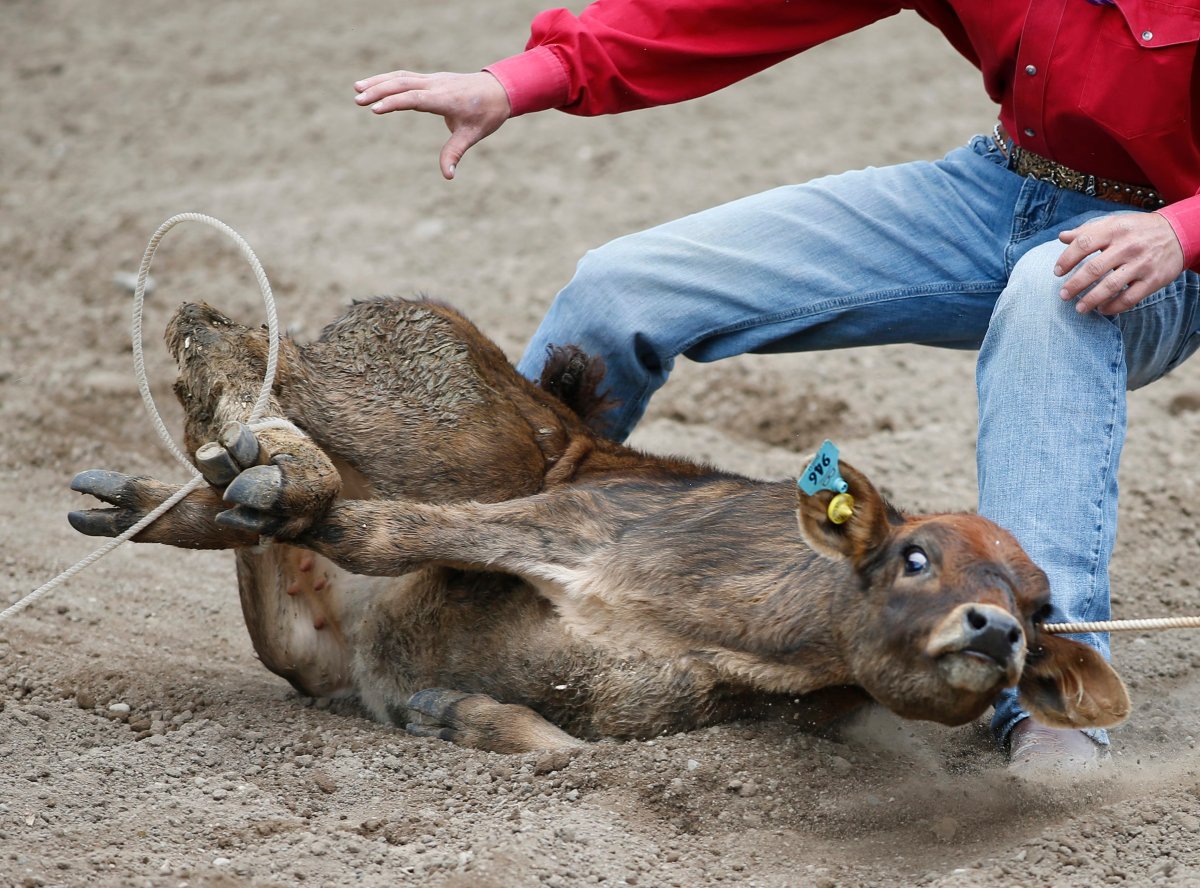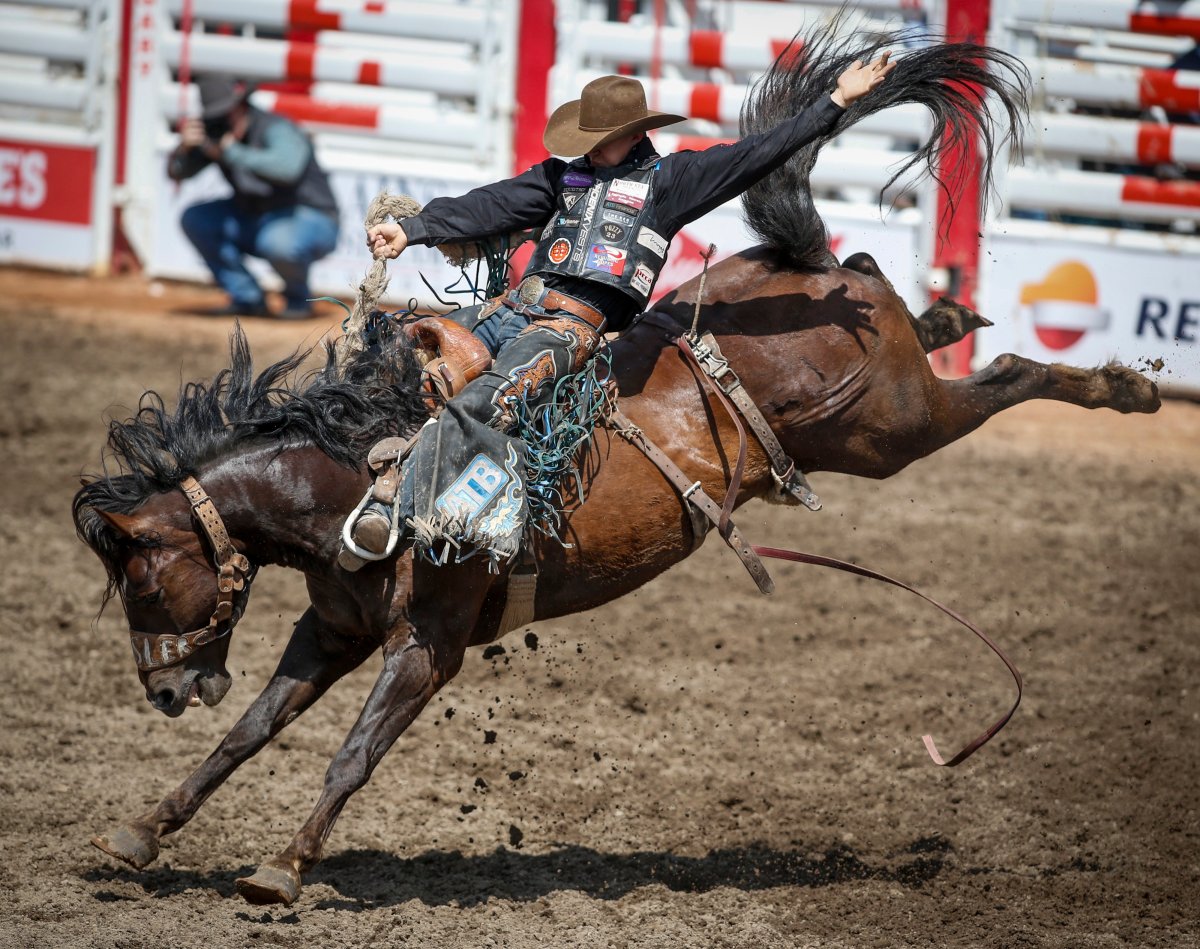A new study from the University of Calgary veterinary medicine faculty is attempting to answer a controversial question that has rarely been researched.

Do animals find participation in rodeos aversive?
More simply: how do animals feel about being in rodeo events like the Calgary Stampede?
Animal behaviour scientist and co-author Dr. Ed Pajor said while it is difficult to answer, the study shows there aren’t a lot of consistent escape attempts and animal comfort increases with experience.
“We don’t see animals balking numerous times. We don’t see animals trying to get out of the chute,” he said. “We don’t see a lot of reactivity at all in the chutes unless there’s people around that are getting very close to the actual bucking event.”
Researchers studied 116 horses over three years at the Calgary Stampede, looking at how they behaved while they were loaded into chutes.
The study — called Effect of animal’s experience and rodeo procedures on behaviour of bucking horses at a large commercial rodeo in Canada — focused on stress behaviours to measure welfare levels: moving back and forth in the chute, tail swishing, defecating, lip chewing, pawing at the ground, kicking and head tossing.
“When it came to the loading of the animals, we found that about 70 per cent of the horses actually balked, and they were difficult to move into the system easily. But really, they only really did that once,” Pajor said.
“We found that most of the behaviour of these horses — the balking behaviour, the difficulty of moving forward — was really due to the presence of people or due to the design of the equipment,” he added, citing poor sightlines making animals slow down.
The most reactive behaviours in the chute stemmed from when cowboys put tacks — riding equipment — on the horses, Pajor said.

Get breaking National news
“We don’t really know clearly whether this is some sort of anticipatory behaviour or if it’s some sort of escape behaviour,” he said.
“The animals may be anticipating bucking, looking forward to it. The tack adjustment may be making the animal misinterpret it as a performance cue. ‘It’s time to go. I’ve got to get ready to go,’ or they may not like it very much at all.
“It is very, very difficult to know because of the different types of motivations that might be involved.”
Habituated or resigned?
Pajor, a U of C professor and a member of the Calgary Stampede Animal Care Advisory Panel, said an animal’s experience level makes a huge difference.
“More experienced animals show less reactivity than the novice animals, and we think this is probably due to habituation,” he explained.
“The animals learn what’s going to happen to them or the other component could be something like learned helplessness, which is a behaviour animals show when they don’t have control over their environment and their situation, and there’s nothing they can do about it and they basically give up.”
But Pajor doesn’t think it’s learned helplessness because the animals were so reactive with people nearby.
Born to perform vs. mistreated
Since moving to Calgary a decade ago, Pajor was struck by how differently people interpreted animal treatment at the Stampede.
“We had, on one hand, people who follow the rodeo and think the animals are well looked after, believe the animals are born to buck and like to perform,” he said.
“We have other people in the public who were saying that the animals are very mistreated, it’s a terrible sport, that the animals don’t like it at all and that the welfare is very, very poor.”
Pajor said the Stampede has already taken measures to comfort animals when spectators are around.
“They have put up a large tent structure when the animals are being loaded so that the animals aren’t distracted by a lot of the people that are up in the stands area… so that’s really helped in terms of calming the animals down,” he said.
Another recommendation is to “decrease the number of people that are hanging around the heads of these animals prior to the performance,” Pajor explained.
“Although these animals are used at 10 to 12 rodeos a year, for most of the time, they’re out at a ranch in Alberta, not really seeing an awful lot of people,” Pajor said.
“So a lot of these animals aren’t used to having a lot of people around.”
The study is the first to evaluate the welfare of bucking horses at rodeos, and one of four to be published on the welfare of rodeo animals, according to the U of C.






_848x480_1571788867663.jpg?w=1200&quality=70&strip=all)
_848x480_1571219523801.jpg?w=1200&quality=70&strip=all)














Comments